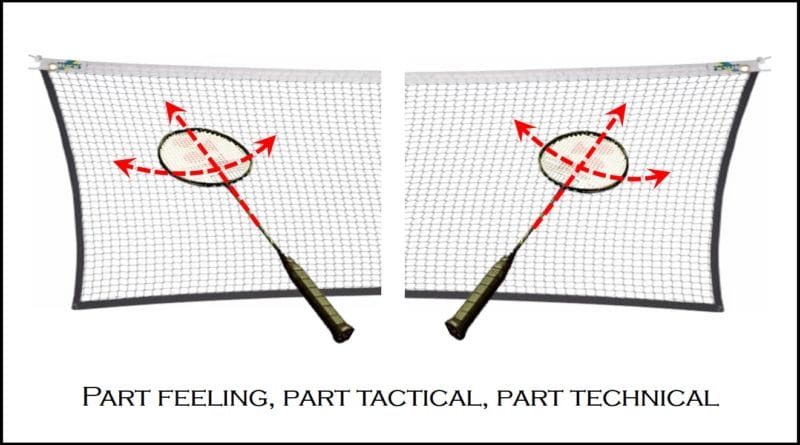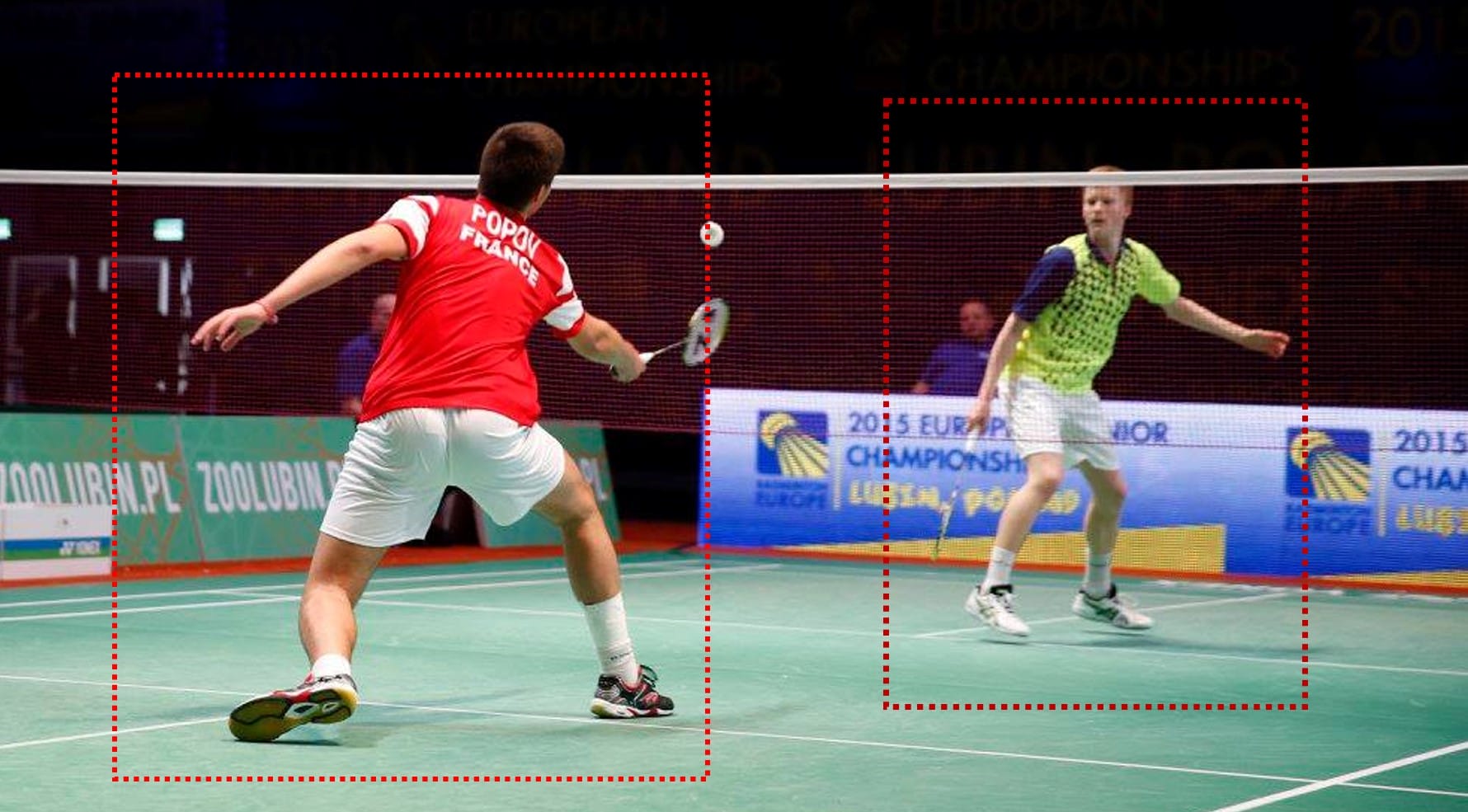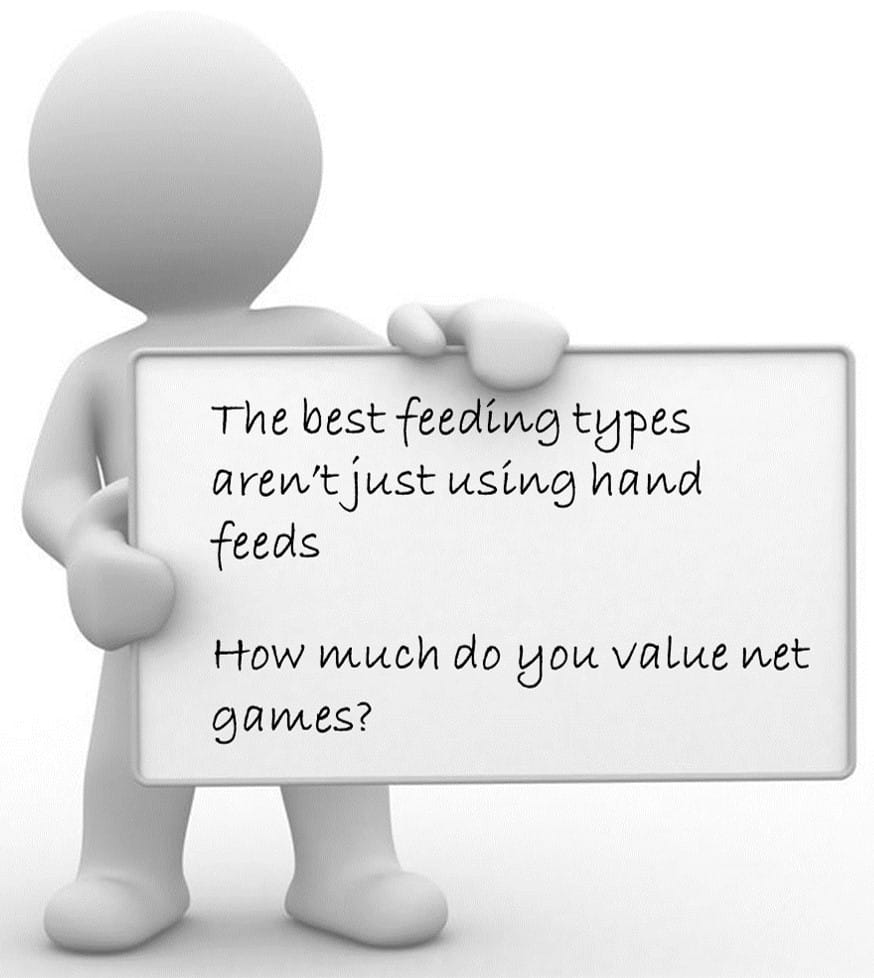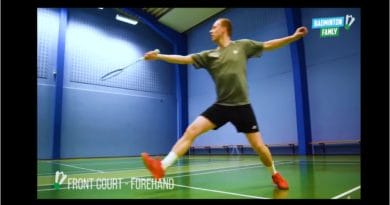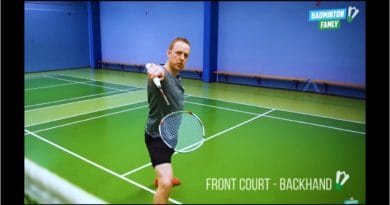6 Ways to improve your spinning nets
How easily can you produce that great net spin?
Is it always best to spin and are some practices more effective than others?
A great net spin is part feeling, part tactical and part technical
Explore the finer points and practice ideas that will help you produce and improve your spins
The way you practice will have a huge effect on your ability to be awesome in a match


– – – – – – – – – – – – – – – – – –
1. Practice tips from players and coaches I know
2. More information for each type
3. To spin or not to spin
4. Returning spins or nullifying them
5. What could go wrong
6. Conditioned games
A great spin comes from a feeling, an intentional thought
It’s not just about knowing how (the tech) it’s about knowing how to develop that feeling
– – – – – – – – – – – – – – – –
1 Practice tips to help from the players and coaches I know
I’ve asked my coaching friends and the good players I know for their ideas on how you should practice your spinning nets shots.
Their advice could almost be a post on its own, so I’ve summarised the important points for you here. Drop me an email and we can meet up on zoom if you want to help, add to the list or ask a question. I wonder if any will surprise you 🙂
I can tell you that they all do work because I’ve used most of these ideas and seen results in the players I’ve coached
The no.1 point they all made was
Just standing still and using a single step with consistent hand feeling will NOT produce great spins in a match, you need much more
Forward movements
You must include different movements forward when you practice
Almost all the spinning net practices I see start with the player around or standing over the service line. They are either a single step forwards or worse the feet stay planted to the ground and only the racket or arm moves
However, be aware and careful that you don’t mix up Practice Performance from Performance in a Game
You will get better at spinning using just a single or no step, but its highly unlikely that this will transfer into a game so that you can reproduce the same spins.
The conditions of this practice are so controlled it would be strange not to improve. You may have practiced in this exact way for many hours, using lots of repetitions, so it’s highly likely that you have some awesome spins in practice. I would expect that.
But does this show itself in a game, do your practice performances transfer into your matches
I do recommend that this practice is used in the early stages when experiencing spins. Or, you could also use this practice if you want to feel good about your spins.
In a real match, the conditions vary
- you are moving at different speeds
- move with different intensities
- the shuttle is struck at all sorts of heights,
- your opponents ‘feed’ also changes and could easily be spinning as you approach.
I recommend that you practice with a deliberate and game-like forward movement. You need to select what this will look like, more about this later.
The best quote about moving forwards was
When I move quickly into the spin, I can make it spin more and it’s almost aggressive and intentional
I feel like I own the spin when I move into it
 Starting stances
Starting stances
If are moving from behind the service line then try starting in either a Forward Attaching(racket leg lead) stance or the Backward Attacking Stance (non-racket leg forwards)
Don’t forget to also move directly forwards as well as diagonally. Not all spins are approaches from the same direction
Using different stances will allow you
- to experience the stances you use in a game, especially in the backhand net court
- different starting body positions will affect your rotation
- it will challenge your technique
 Feeding types
Feeding types
Vary the feed and feeding situations. It’s that simple.
Your best results will come from experiencing different scenarios: hand feeding for spins isn’t the only way 🙂
- straight and crosscourt
- racket and hand feeding
- upwards and downward trajectories
- racket blocks, net returns, hand-feeding: underarm and overarm
- partner (opponent) mini-competition net shots – this is my favourite ‘feed’ of all
Why would you limit your experiences by always choosing to practice using your favourite hand feed
Be an explorer
Everyone I spoke to expressed the view that you need to be adventurous when thinking about and developing your net spins
Don’t be afraid of making some mistakes, push your limits and imagination. Take risks and think how you strike the shuttle, try out different ideas. Go on the court with a friend and experiment! No coach just you and someone like you.
My friends spoke about how they got these ideas from not only watching other players but by playing against those with great spins. That motivated them to know how they could learn to spin just like the people they faced over the net
Some spoke about how they would ask others in practice to show them what they did and what tips could help
Without a desire to find out information and try new ideas your nets spins will be limited
Love the feeling
 The players I know with the best spinning nets talk about them in very descriptive ways but not necessarily with lots of technical information.
The players I know with the best spinning nets talk about them in very descriptive ways but not necessarily with lots of technical information.
They talk about knowing what to do but not exactly being able to describe their actions. Coaches may give you lots of technical information but maybe surprisingly top players often feel comfortable showing you their spins rather than explaining how they do them.
However, it’s common for expert players but ‘know’ a few things but not necessarily everything, or have exact information to help you. Instead they ‘just do it’. Often the doing’ they talk about comes from lots of practice and in the case of spinning nets, practice very similar to the advice given here.
They allocate time each week to hit spins: spins in simple practices spins in nets games, spins in matches, they love them all. That’s where this advice comes from.
My recommendation is to ask them to play a net game against you on the court and watch their actions and the spins that come tumbling over 🙂
Don’t fixate too much on the Technical, start to Love the results and playing
Practice
The final piece of advice was that everyone recommended that you must enjoy your net spin practice.
Once I probed deeper they all seemed to have 2 or 3 big reasons why they enjoyed working on this part of their game. Often it was for a sense of ‘Practice Satisfaction’, however, the better players also referred to the how practice transferred into a game and that it was only in a real competitive match that they judged how good their spins really were.
I was surprised that I’ve seen players practice spins for 60 mins and come off court dripping in sweat. It was surprising how physical they made the practice and how much variation they put into their practice. More of this later
– – – – – – – – – – – – – – – –
2. More information for each type

In part 1 each spin type was described but now in part 2, there will be some more subtle advice for you to consider.
The advice will be short and to the point. Don’t forget to click on the videos in this post. There is some great advice for you to watch.
The Badminton Family post “3 Tips to get more spin” is full of fantastic visuals and really worth watching.
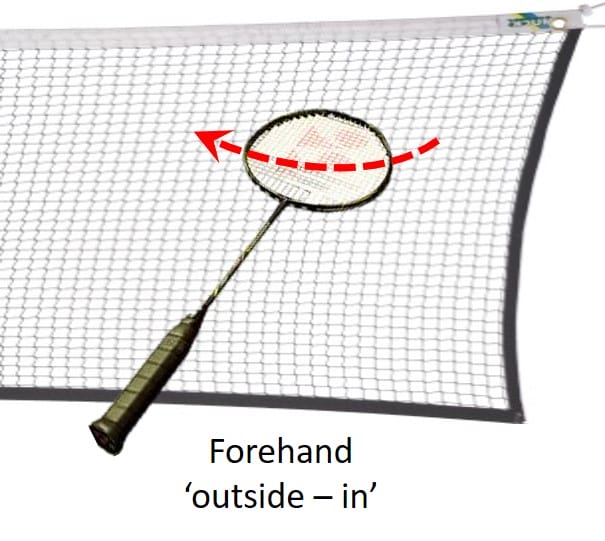 Forehand “Outside – In”
Forehand “Outside – In”
There are several different ways to think about this stroke and you may already have your favourite way of striking it.
Imagine striking the bottom outside of the shuttle base towards the end of your down stroke
I recommend that you aim to move your body slightly outside of the shuttle so that if you were to miss it, it would travel toward you racket shoulder.
Try to think of different hand and arm combinations. Some coaches talk about actions like ‘turning a doorknob’ or ‘trying to hit the side then the bottom of the shuttle’. My favourite is to think about the shape of the letter J and draw a J with your strings as you make contact.
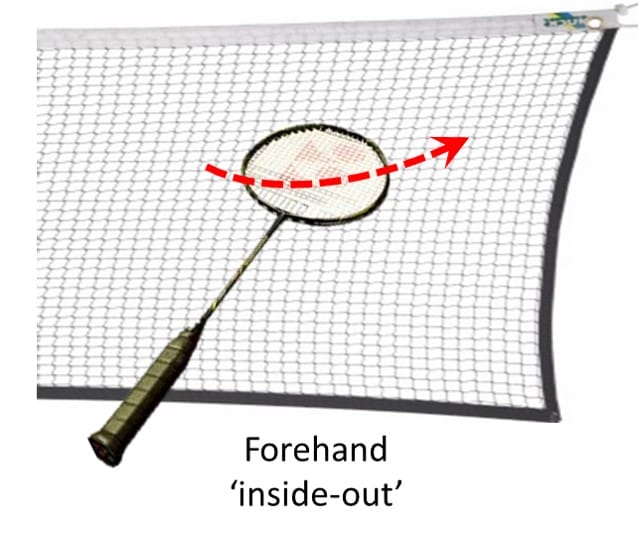 Forehand “Inside – Out”
Forehand “Inside – Out”
This is a tougher spin to master. There are 2 different types: flat rolling spins or vertical spins.
It’s best used when the shuttle is flying towards you from cross-court. Some players reported imagining brushing up the back of the shuttle and rolling their hand up the back of the shuttle
The advantage of the flatter spin is that it doesn’t sit up. It also travels faster than say an upward spin and can be tougher for the opponent to safely return.
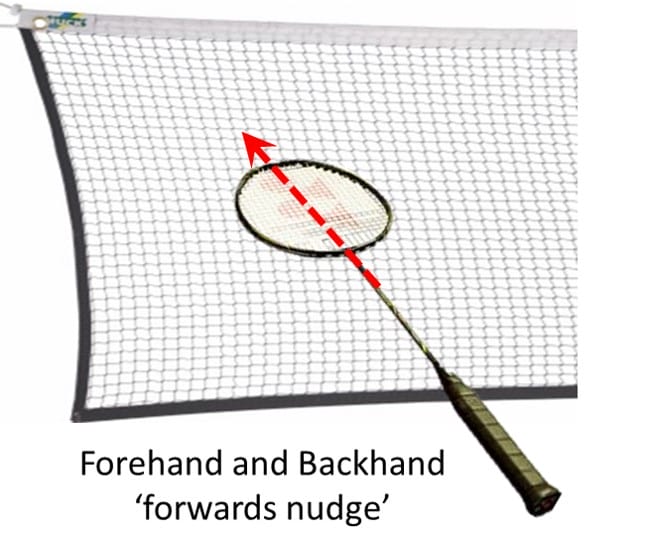 Forward Nudge (Forehand & Backhand)
Forward Nudge (Forehand & Backhand)
Some players report actions such as ‘push towards & downwards’ almost ‘cutting underneath the shuttle’. Others talk about another action where the stroke is played with a slight rolling underneath with a small upward finish. You can combine a slight sideways action just on contact if you want.
I’d recommend that you practice this with both upward and downward feeds. Also ensuring that the shuttle flies at different speeds towards you. To only practise with ‘perfect’ feed will limit your ability in the game.
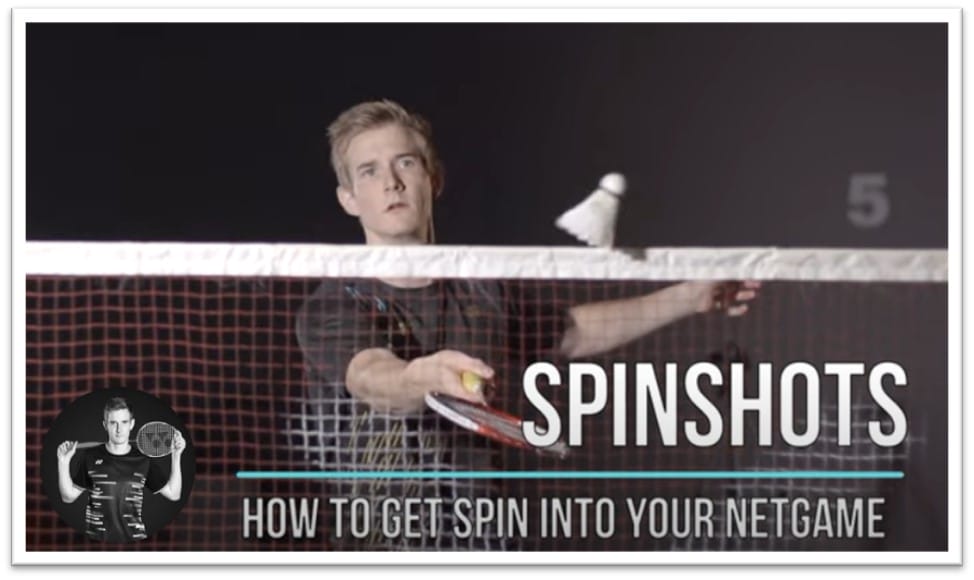
 Backhand “Inside – Out”
Backhand “Inside – Out”
Another favourite for applying awesome spins to the shuttle. It can be developed from a crosscourt feed and again use both upward and downward feeds.
The action can be a right to left “U” or “J” shape that causes a slight role under and around the shuttle. It is also played as an angled racket face without any role, cutting across the flight of the crosscourt feed.
Try both actions and let me know the differences in the 2 spins, especially which is easier to get more spin and which is easier to control if you want a tight net.
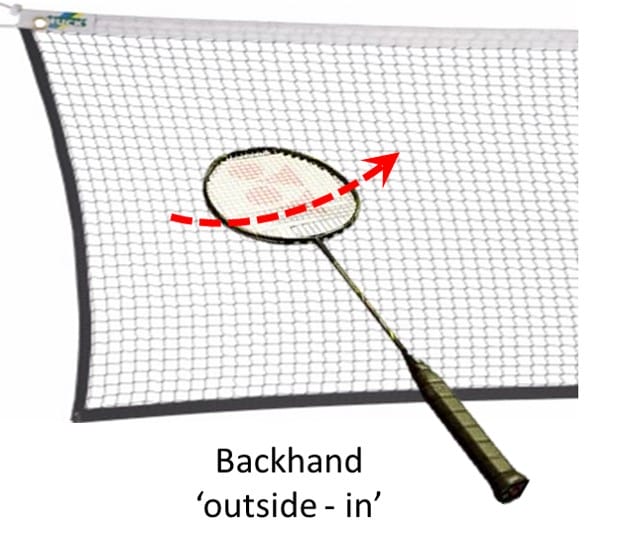 Backhand “Outside – In”
Backhand “Outside – In”
This one often looks easy but can be tougher than you think if you want the shuttle to really spin. It will certainly be easier to master if it’s played from directly in front of you.
You will have to prepare early (even earlier than your normal E.P.!) and maybe move your body throughout the action. It’s certainly a hand/fingers and shoulder action.
Close your eyes now and imaging this stroke. Does your head start to move? 🙂
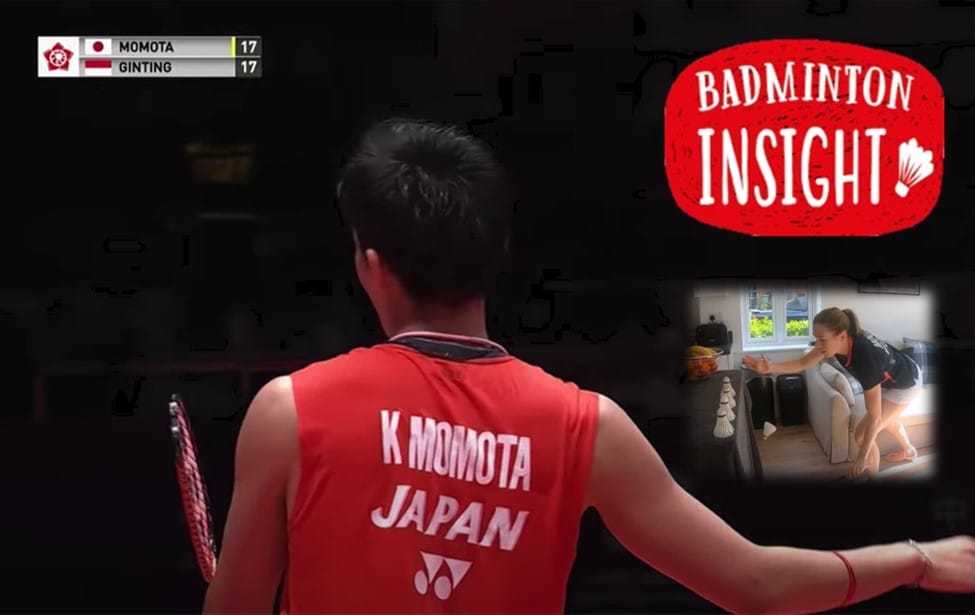
 The Net Climber
The Net Climber
This spin is played when the shuttle is struck from much lower down the net, even around the bottom of the net. Did you know that you can still spin from the bottom of the net?
There are a few ways to perform this stroke. Some players like to cut sideways underneath the shuttle whilst also hitting it upwards. I’ve also spoken to other players who use a backwards-pulling action.
Whichever action you try, I hope you can get the shuttle to spin as soon as it leaves your racket so that it just reaches the tape and falls over.
It can be a fun shot but also an important shot to practice for both singles and doubles players. Try it out when you play net games in practice and remember it’s not lucky if it spins and goes over. The more your practice the ‘luckier you will become’ 🙂
– – – – – – – – – – – – – – – –
3. To spin or not to spin
Do you think every net shot you play should be a spinner … I don’t
You need to make a decision in practice and in a match. A decision that will either be a prepared tactic or made in the moment.
Why not consider the next few points. I’d really like to hear if you agree with them.
The downside to spinning nets are
- They take longer to travel over the net
- They can ‘sit up’ and present opportunities for your opponents to kill
- The error rate is higher than maybe you believe it to be
The upside of spinning nets
- They can be very difficult for your opponent to control and return safely as they cant easily hit the base of the shuttle
- It’s possible to make them spin close to the net and make it hard for your opponents to lift to the rear of your court
Fast nets rather than spinning nets
It takes longer for your spinning net to go over the net and into your opponent’s court than say playing a ‘fast net shot. A fast net shot could also be described as a net push, one that flies fast and flat over the net, landing before the service line.
When I suggest that a spin takes longer in time, I mean just a little bit longer, but that’s enough for your opponent to reach it.
I recommend that you practice both spins and fast nets in a TACTICAL practice. Talk with your coach and decide when a fast net could be more appropriate than a spin. Can you visualise any situations while you are reading this post?
Consider if the spin gives you the advantage or would it be better to get the shuttle over ‘faster’ …
what do you think?
– – – – – – – – – – – – – – – –
4. Returning spins, spinning back or nullifying them
Returning or Spinning back
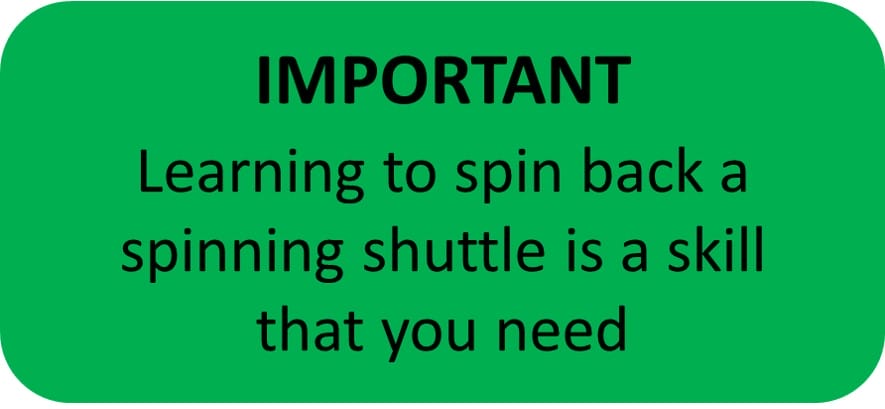 It’s as important to know how to return spinning nets as is to play them.
It’s as important to know how to return spinning nets as is to play them.
I’ve seen a few different ways of practising this, some coach controlled others more game-like.
The question for you is which is best to prepare you to play an opponent who has great spins. There are advantages and disadvantages to both.
You need to decide what to do.
You also need to believe that returning isn’t just lifting safely to the backcourt. It is possible to learn to spin back a shuttle that is already spinning. This is a skill that you must develop if you are to become the best you can be.
Do you practice the art of returning spins and if so how do you set your practice up?
Hand Feeding by a Coach
There are lots of videos on social media of people hand feeding and spinning shuttles with their fingers as they throw. The theory is that it will help players learn to control and even spin back with a spin of their own.
It is possible to spin from your fingers and if you stand close to the net you can make it very difficult for a player by speeding up the feeding process. You may know 2 or 3 different ways of spinning using different finger movements and throws.
How representative & effective do you think hand feeding spins is compared to what happens in a game
Do you see any limitations?
Game like feeds – using a racket
I believe that if you want to become really good at returning spinning nets you must face a real opponent who uses a racket, spins as they would in a game and want to beat you (most of the time 🙂 )
This means that you need the following
- Practice partners who can spin
- Practice situations that replicate real game scenarios
- A desire for both players to want to spin, return the spin
- A desire to finish the rally and seek advantages
- No hand feeding
Spinning back
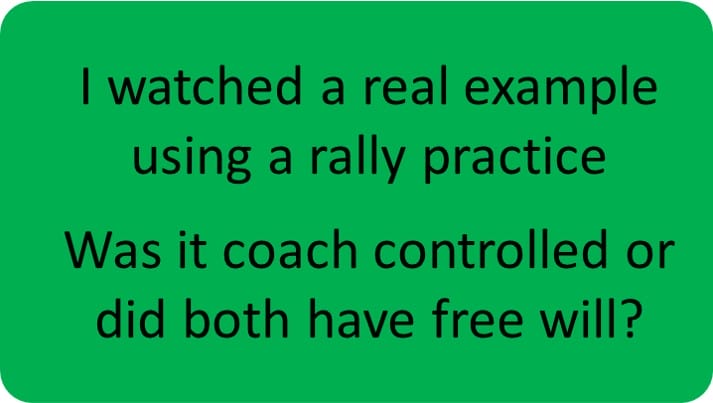 I first witnessed the awesome ability to spin back when I watched Richard Vaughan practice with a junior international player. This player was developing their net spins after striking down to Richard’s midcourt.
I first witnessed the awesome ability to spin back when I watched Richard Vaughan practice with a junior international player. This player was developing their net spins after striking down to Richard’s midcourt.
.. He blocked back in a controlled way that put the shuttle in the ideal position for the spin they were practising. It was a controlled deliberate defensive block.
.. The player moved forward to hit the spin they wanted, it was great 🙂
.. Richard then lifted high to the rear court and they continued.
.. One shuttle, fast drop/half smash, block (controlled by the coach), a net spin of choice. Then repeated in a set of 8-10
.. Then suddenly when the shuttle seemed to spin more than before, instead of lifting, Richard played a spin back to the net.
.. That spin was even better and I sat there mouth open
.. When I asked how that was possible he replied
“When I see the shuttle spinning like that I know I can spin back like this !!”
My questions to you….
- Can you gain information as your opponent approaches the net before they even spin the shuttle?
- Is it possible to know which spin is likely and could it be the one you can spin return?
- As they strike the shuttle does that help you see (feel) more about what spin is likely?
- As you watch the shuttle spin are you able to decide/adjust your choice of what to do next?
- Can success be measured by seeing if it goes over, is the opponent able can they kill it, can they even return if safely?
- Could all the above still be achieved using a hand feed?
- Which practice would you prefer to do?
Go to no 6 and try the conditioned games to help you return spins and also to spin back
Nullifying
If your opponent keeps playing great spins in a way that you just can control, what do you do?
You could learn to return the spin safely or even spin it back. However, this skill will take time to develop and your next opponent maybe one you fear at the net.
I recommend that you make a temporary adjustment in your tactics while your practice away from the competition.
If you have read this far, I’m sure you know the answer already.
It’s as simple as ensuring that you push slightly away from the net in your defensive blocks and net returns. I’ve heard some people call in ‘neutral play’, how do you describe this tactic?
It has been called ‘neutral play’ as it describes how you would neutralise the opponents’ ability to spin from close to the net. It’s much harder to spin shuttles the further away from the net.
How would you practice this style of play, is there a conditioned game that you could use. In future posts, I will list and explain the Conditioned Games that you will develop ‘neutral play.
Be careful though. Trying to nullify by playing away from the tight net will open up other shots from your opponents.
– – – – – – – – – – – – – – – –
5. What could go wrong and how to cure any problems
Growth spurts
When you grow, your control of these types of stokes will be different. It’s more likely that you will not have good contact with the shuttle and it may feel that you can’t control the spin anymore. Mistakes will start to appear where previously your game was near-perfect.
This feeling may surprise you, but wait, keep practising as it will return.
Too far away from the net
Do you know your limits when trying to spin the shuttle from further away from the net? There is a technique to doing this and it is worth practising to see how far from the net you can still generate spins.
Why not have a competition with your friends to see who is the best as you increase the distance away from the net.
This is an important skill especially for singles players off the return of low serve.
Be aware that you don’t try too hard in competition, especially if your opponent has read no.4 above and is trying to nullify your amazing spins
Too ambitious – ‘Spinphobia’
You’ve leant how to spin the shuttle and now want to do it every time you are at the net. Not only do you try to spin everything, but you start to try and apply more and more spin.
I’ve seen players who are determined to show how much they can spin and don’t realise that their error count is increasing. A controlled net or fast net is ignored in favour of a spin, then it goes into the net and the score remains close. You will have to consider if you spin too much or maybe there are times in games when you don’t want to take the risk. Spinning everything may not be the best tactic.
However, you will have to decide yourself. All I ask you to consider id do you suffer from ‘Spinphobia’ ? 🙂
What problems do you have or ones that you see
I need your help so that we can help others.
Imagine if every person who read this post identified a problem they had with learning and developing spinning nets shots. It would be even better if they had a solution or a favourite piece of advice that we could all try.
That person could be you !! 😉
I would be very grateful if you could jot down some notes, a sequence of progression you use. Anything that you feel others need to know. I will turn it into a post or add it here. Of course, I will credit you.
If you send me a video even better.
– – – – – – – – – – – – – – – –
6. Conditioned games
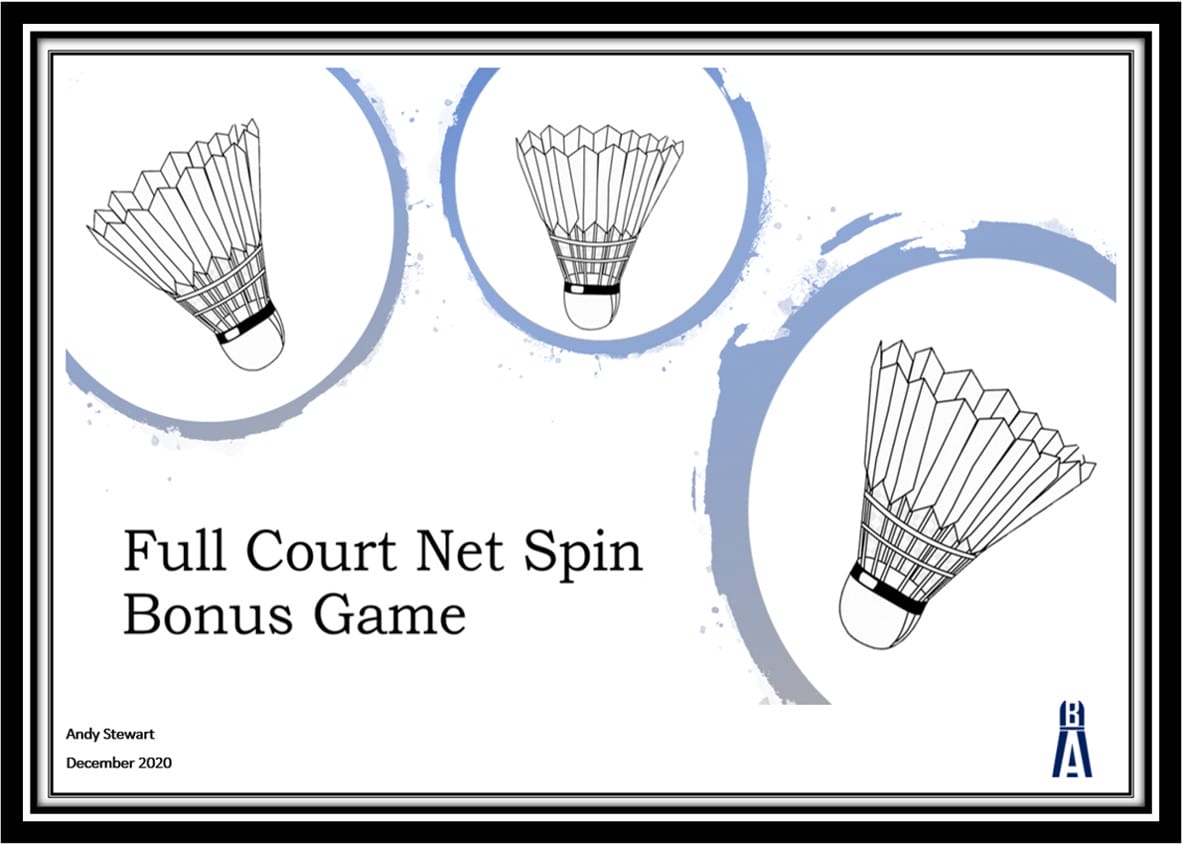
If you want to try out a Conditioned game that will help you practice your spinning net shots then click on the image or this link Net Spin Conditioned Game – Badmintonandy
Conditioned games work best when they feel like a real game but there are some limitations and rewards within them. In this game, you should get lots of opportunities to play spinning nets. You will also get just as many opportunities to practice return your opponents spinning net shots.
The strange thing about this game is that you may find that you will have to work harder physically than you expected!
I’ve used this game and variations of it to answer these player questions:
- I want to practice playing spins in a practice that feels like a real match
- My net spins seem to work great in technical practice but not as well in a real match… why?
- Is it possible to play spins that are impossible to return into court?
- How can I decide which spins to play to without knowing what the feed is?
- I want to practice playing spinning nets without the coach hand feeding and to see if my opponent can actually return them 🙂
There will be a series of practices to help spinning net shots in the future post titled ‘ A Coaches Guide to Spinning Nets
It’s not all about hand feeding and singe steps at the net
Spinning nets can be created in so many other ways

